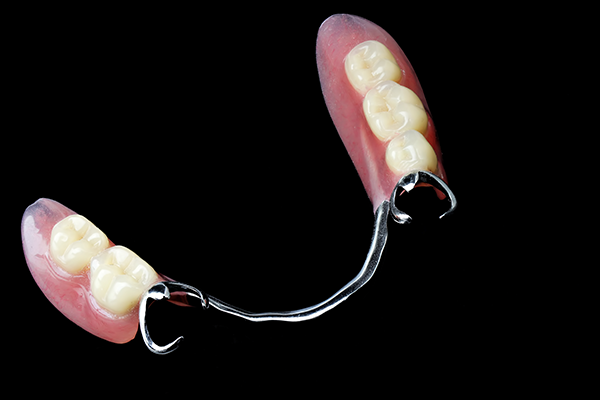Dentures
Dentures can replace missing teeth and surrounding tissues. There are two types of dentures-complete and partial denture. Complete dentures are used when all teeth are missing, whereas, partial dentures are used when some natural teeth remain.
Complete Dentures
These can be either conventional or immediate. Conventional dentures can be replaced in the mouth after the teeth have been removed. Unlike conventional dentures, immediate dentures are made in advance and can be replaced as soon as the teeth are removed.
The wearer does not have to be without teeth during the healing period. The bones and gums shrink with time, particularly during the healing period following tooth removal. Hence, immediate dentures require more adjustments to fit properly. These are considered as a temporary solution.

Partial Dentures
Partial denture or bridge consists of replacement teeth attached to a pink or gum-colored plastic base, which is connected to metal framework holding the denture in the mouth. Partial dentures are preferred when one or more natural teeth remain in the upper or lower jaw.
A fixed bridge replaces teeth by placing crowns on the teeth. The bridge is then cemented into place. Partial denture not only fills in the spaces created by missing teeth but also prevents other teeth from changing position. A precision partial denture is removable and considered as a natural-looking appliance.
Care
You need to brush your dentures daily to remove food particles and plaque. Brushing can also help prevent teeth from staining.
Rinse your dentures prior to brushing to remove any food or debris.
Try to use a soft bristle toothbrush and a non-abrasive cleanser to brush all the surfaces of the dentures so they don’t get scratched.
Clean your mouth properly-including gums, cheeks, tongue and roof of your mouth to remove any plaque. This can reduce the risk of oral irritation and bad breath.
